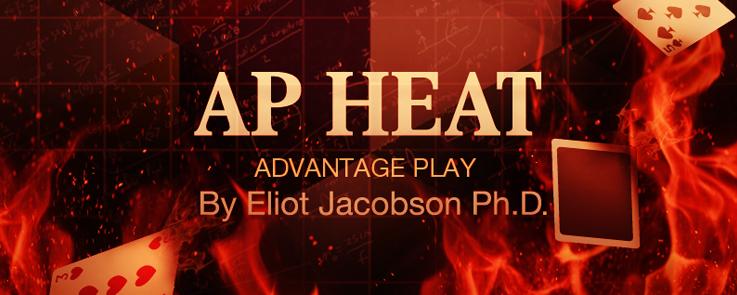Eight Common Mathematical Misunderstandings

The casino industry is built on mathematics. It starts with probability theory and goes on from there. Concepts like variance, hold, house edge, odds and theoretical can each crash a casino’s profits. Advantage players understand mathematics. They find errors and pounce. It is not just a question of games having weaknesses, it's a relentless search for an edge. These edges can come in many forms.
One of the surprises for me personally after I "switched sides" was discovering the profound lack of understanding of the mathematics of the games from the casino side. Few have a detailed understanding of the statistical and probabilistic underpinnings of gaming. With this lack of information and looking at both sides, no wonder it is so easy for APs to earn a good living.
Here are eight of the most costly and common mathematical errors casinos make.
-
Table game rule modifications can change the house edge in ways that have disastrous consequences. One of the most common promotions is a “blackjack pays 2-to-1” promotion. The problem is that this gives the player an edge over about 1.8% over the house. With that kind of edge, players beat the Imperial Palace in Biloxi out of more than $800,000 on Father’s Day in 2003. Before you change the rules, make sure you understand the mathematical implications.
-
It is important to carefully consider the mathematics of premium players. The mantra is that attracting them must be a good thing. Most premium players feel entitled to comps, cash rebates, quick loss rebates, dead chips and other perks. Moreover, they can usually find a better deal if they shop your competitors so the pressure is to keep upping the stakes. The volatility they create can hammer your books for months. The math shows that a premium player who plays baccarat for 18 hours at $1000 per hand, after all expenses and comps are factored in, may generate about the same profit for a casino as a player playing max coin in 15 line penny slot with a hold of 10% for the same period.
-
The value of points taken across various multiple point days and “cash-for-points” conversion specials can make a straight-forward 0.10% proposition into rocket science. Giving 10x points on Wednesdays, and a 2-to-1 Christmas cash-for-points special, gives back 2% to the players. For players who favor Video Poker, this gives them a hefty money-making opportunity.
-
Free play is not free. APs will go directly after this source of free cash. Also, for ordinary players, if a player is given $30 of free play at a slot, there is a real cost to that free play. It doesn’t cost $30, but the cost is certainly not negligible. Not all players will play until this money is given back. Some will hit a jackpot and leave. Some will have time constraints. Some will come with too small a bankroll to generate the theoretical win. On top of this, a slot machine is occupied by a player who is not generating income for the casino. All the secondary costs of rent, employees, utilities, taxes need to be factored in. Giving free play away can cost a lot.
-
Maybe the most surprising and common error are those who don’t understand the difference between hold and hold. The word “hold” as it is used for slots, is a synonym for the games theoretical house advantage. Whereas “hold” as it is used for table games refers to the fraction hold = win/drop. These are not the same thing. In the 2-to-1 blackjack example, the marketing department at the Imperial Palace thought that giving back 2.3% by changing the blackjack rules would drop the hold in blackjack from 12% to just under 10%. This was caused by simply confusing hold and house edge. Big error.
-
Though theoretical win for slots players is trivial to compute with today’s technology, computing the theoretical win for a player who plays table games is still a very challenging problem. It requires several approximations, for example, rate of play, player strength, average bet. If the player also plays side bets, mixes and matches his bets between two wagers with significantly different edges, and does this at several different games, it becomes more art than science. APs know how to manipulate the casino's t-win to earn comps in excess of their expenses. APs brag of getting RFB for "free."
-
Another common error is the overreaction to volatility. In a well-known experiment, subjects were asked to make up a sequence of results for 100 coin tosses that they felt would be “random.” Invariably, there were not enough long sequences of heads and tails. In casino games, the sequences of wins and losses can persist far longer than human intuition says is reasonable. For management, there is a tendency to look at today’s results, or this month’s results, and believe something is wrong or needs fixing. Overreacting to short-term results is a common and costly mistake.
-
Finally, a common misunderstanding about “the long run” is that it is not a statement that things eventually balance out. You may hear the statement that if you flip a coin long enough then the number of heads and tails is about equal. The “long run” does not say this. What it says is that the ratio of heads to tails gets closer and closer to 1. This misconception drives a lot of expectations that fortunes should somehow even out on both sides of the table. If black comes up 10 times in a row at roulette, the next spin doesn’t know and doesn’t care.


